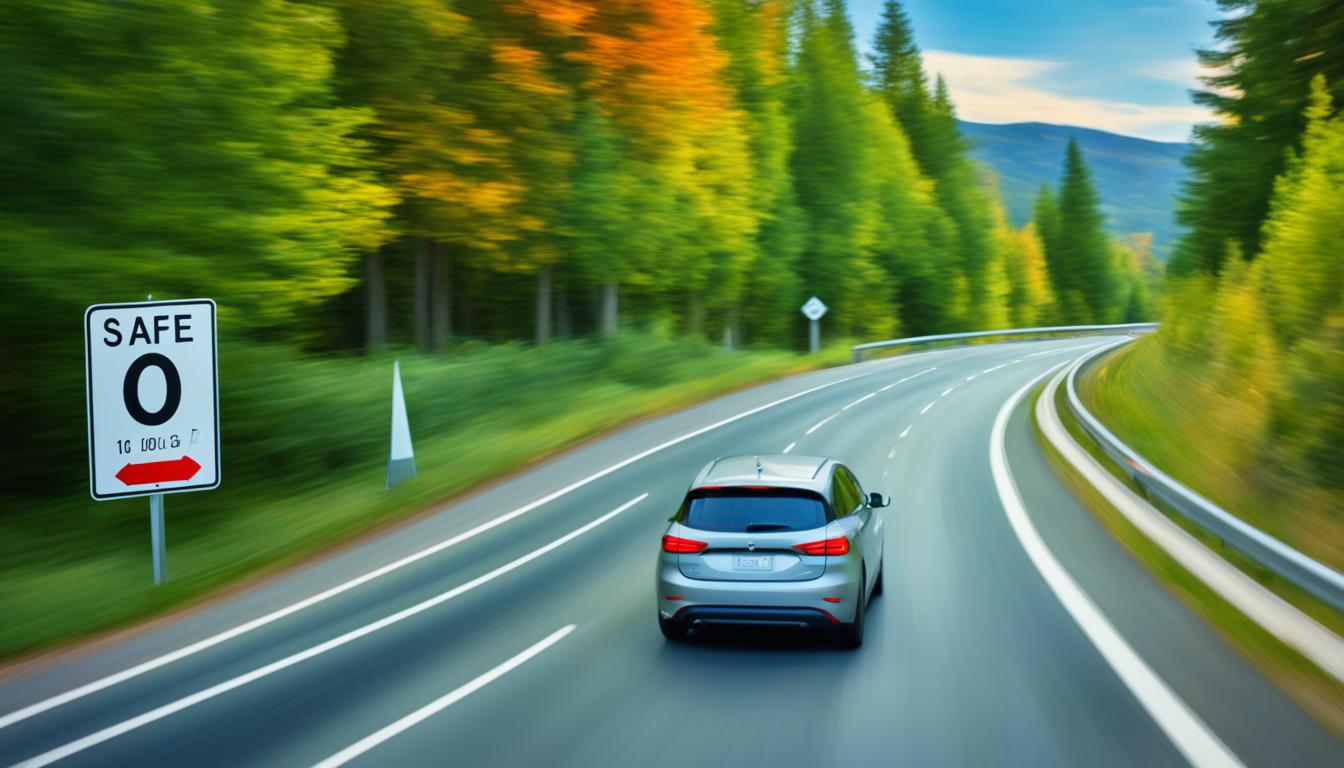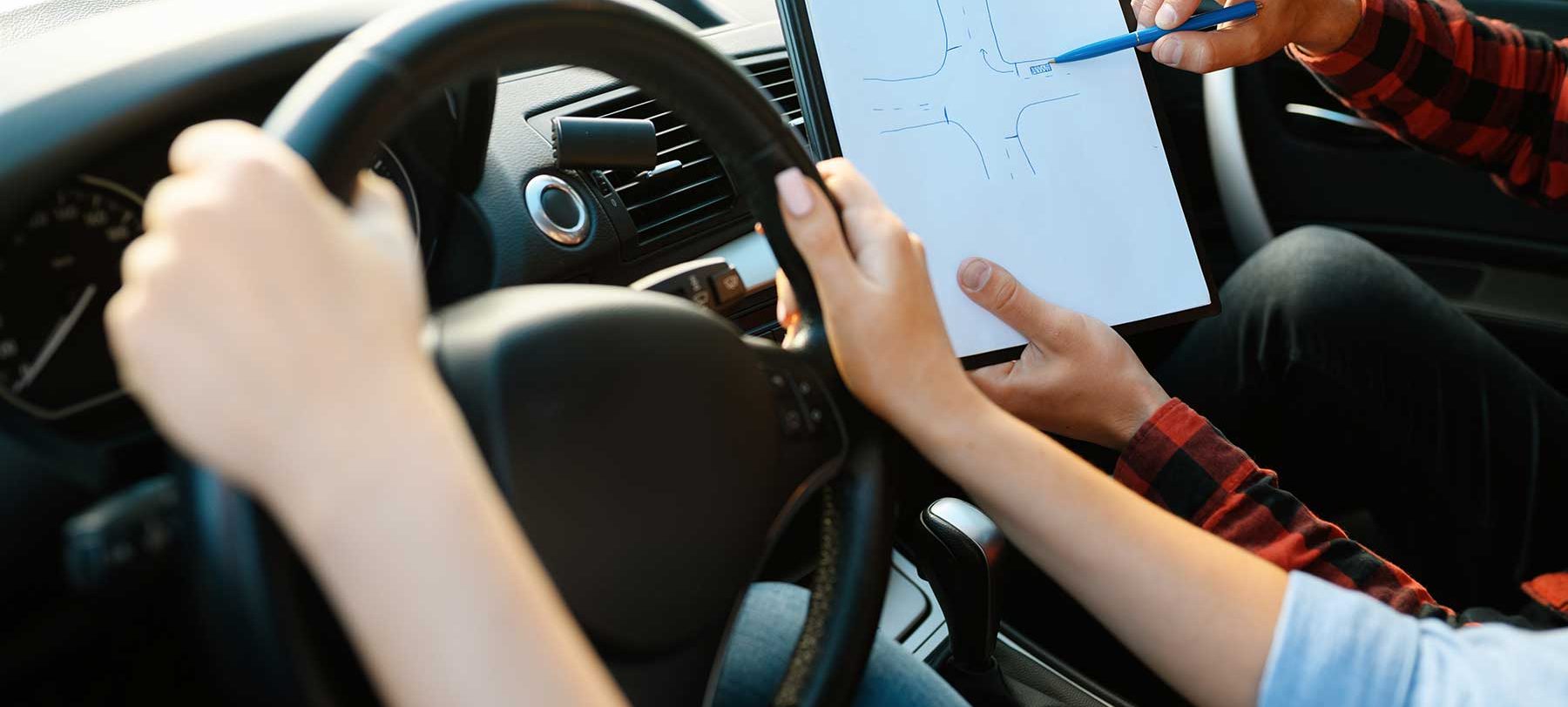Starting to drive can make you feel excited and a bit scared. As a beginner, the goal is to create safe driving routines early on. This not only increases your confidence but also makes you a responsible driver. This piece offers crucial tips for your initial days behind the wheel. It covers understanding your car and learning advanced safe driving techniques.
Together, we’ll start this journey to make you a safe and self-assured driver.
Key Takeaways
- Building safe driving habits from the beginning is essential.
- Understanding your vehicle is crucial for efficient and safe driving.
- Regular driving practice in various conditions enhances your skills.
- Always prioritize safety by wearing your seatbelt and avoiding distractions.
- Maintaining a safe distance prevents collisions and ensures road safety.
- Defensive driving techniques help you stay aware and handle emergencies effectively.
- Regular vehicle maintenance prevents breakdowns and ensures a smooth driving experience.
Understanding Your Vehicle
One of the first things a new driver should do is get to know their car. You should learn where the controls are and what the dashboard indicators mean. Also, know how to do simple maintenance to keep your ride safe and running well.
Familiarize Yourself with the Controls
Know where each control is and how to use it. Find where things like the lights and wipers are. Knowing this helps you react fast when you need to on the road.
Dashboard Indicators
Using your car means understanding what the dashboard lights and symbols are telling you. They show the condition of different car systems. By understanding them, you can spot problems early and drive safely. Make checking your dashboard a habit to know your car’s health.
Basic Vehicle Maintenance Tasks
Regular maintenance keeps your car reliable for years. Check oil and coolant levels often. Also, keep an eye on tire pressure and your lights. This all helps you drive safely and saves money on gas.
Regular Driving Practice
For every new driver, getting lots of practice is key. This helps you become more confident and skilled when driving. By consistently practicing, you not only get better but also learn to handle different road situations.
Driving in Various Conditions
It’s important to practice driving in different situations. This might mean driving in heavy rain, at night, or in busy areas. These experiences will make you a better driver overall.
Start with what you know and slowly tackle harder situations. This method boosts your confidence and skills bit by bit. Also, getting lessons from professionals at a driving school really helps. They offer focused advice to grow your driving abilities.
“Regular exposure to various driving conditions helps drivers develop adaptive skills that are crucial for safe driving.”
To wrap up, practicing in many environments and taking formal lessons are crucial for new drivers. This kind of dedicated effort shapes you into a skilled, versatile driver.
Safety First
Driving safely should be your top priority every time. There are many ways to make sure you and others are safe on the road.
Wearing Your Seatbelt
The top rule for driving safety is putting on your seatbelt. Seatbelts play a big part in keeping you safe if a crash happens. They hold you in your seat and stop you from flying forward or out. Always remember to buckle up, no matter how far you’re going.
Following Traffic Rules
Sticking to traffic rules keeps everyone safe. These rules are there to help and protect drivers, walkers, and bikers. By obeying them, you make the road safer for all. Remember to drive within the speed limit, pause at red lights, and let others go first when needed.
Avoiding Distractions
Being distracted while driving can lead to serious trouble. Make sure you stay focused on the road and nothing else. This means no phone, food, or adjusting the radio when you’re behind the wheel. By keeping your eyes on the road, you cut down the risk of an accident. It lets you respond fast if something unexpected happens.
Maintaining a Safe Distance
Making sure you keep a safe distance while driving is key to safety. It gives you time to react and avoid accidents. Try to always keep at least a three-second gap from the vehicle in front under normal conditions.
Being aware of other drivers is very important. When the weather is bad, like in rain or snow, you should increase your following distance. This helps because roads can be slippery and you might not see as well.
| Weather Condition | Recommended Following Distance |
|---|---|
| Clear Weather | 3 seconds |
| Rain | 4-5 seconds |
| Snow/Ice | 8-10 seconds |
| Fog | 5-6 seconds |
Staying alert and keeping your distance makes you a safer driver. Always keep an eye on what’s happening around you. Adjusting your speed to keep a safe distance helps keep everyone safe on the road.
Defensive Driving Techniques
Learning and using defensive driving techniques is crucial for safe road travel. It helps you skillfully handle surprises and lower dangers.
Staying Aware
Driver awareness is key in defensive driving. Always keep an eye on what’s around you. This way, you can spot risks early and act fast. Remember to regularly check your mirrors, be aware of traffic changes, and know where blind spots are.
Anticipating Others
In defensive driving, anticipating others moves is important. It’s about planning ahead, not just reacting. Think about what pedestrians, bikers, and drivers might do. For instance, watch for a car about to change lanes so you can adjust if needed.
Handling Emergencies
Dealing with unexpected events is another key part. This includes knowing what to do if someone brakes suddenly or if you see a surprise in the road. Be ready to use moves like controlled braking and swerving to avoid a crash. Regularly practicing these skills is vital.
To wrap up, defensive driving means always being aware, planning ahead, and being ready for the worst. This not only keeps you safe but also helps make the roads safer for all.
Regular Vehicle Maintenance
Keeping your vehicle in top shape is essential for safety and to make it last. Making sure it’s maintained can stop sudden breakdowns and keep it going well. We’ll look at some key tasks like changing the oil, rotating tires, and checking the brakes.
Oil Changes and Tire Rotations
Oil changes and tire rotations are crucial. Changing the oil keeps the engine moving smoothly and stops it from getting too hot. Rotating tires makes them wear out evenly, making them last longer and making your car easier to drive.
| Maintenance Task | Frequency | Benefits |
|---|---|---|
| Oil Change | Every 5,000 miles | Maintains engine lubrication, reduces friction, and prevents engine wear |
| Tire Rotation | Every 6,000 to 8,000 miles | Ensures even tire wear, extends tire life, and improves vehicle handling |
Brake Inspections
Checking your brakes often is a must for safety. It finds weak brake pads and spots potential brake issues early. This way, your brakes work better, making your driving safer all around.
Sticking to a tight maintenance plan with oil changes, tire rotations, and brake checks will make your vehicle more reliable and perform better. Keep up with these tasks for a smoother and safer time on the road.
Monitoring Tire Pressure
It’s key to keep your tire pressure correct. Doing so is important for steering, using gas well, and staying safe on the road. This simple task is often forgotten, but it’s crucial for many aspects of driving.
Properly inflated tires give you more grip and control. Good handling means you can deal better with surprises on the road. It’s a big part of keeping you safe.
You should check tire pressure regularly. I check mine every two weeks with a gauge, but you might need to check more often before a long trip. Weather changes can also affect tire pressure.
If you ignore tire pressure, you might see more wear and tear. This can even lead to dangerous bursts. Too much air in tires means less grip, but not enough air can cause them to overheat and fail. Both situations are bad for safety and your wallet.
| Frequency | Task | Impact |
|---|---|---|
| Weekly | Visual Inspection | Quick check for visible issues |
| Every 2 weeks | Tire Pressure Check | Ensures optimal tire performance |
| Monthly | Full Tire Inspection | Monitors wear and tear |
Keeping an eye on tire pressure pays off in many ways. It’s good for your safety and can save you money. This simple habit has big advantages. And it’s easy to do.
Never forget about tire pressure in your maintenance. Getting it right makes you safer and your drives better. So, always check to keep everything running smoothly.
Top Tips for New Drivers
Just starting out on the road? Learning safe driving habits is key. Here are essential tips for new drivers to boost your confidence behind the wheel:
Always start with the basics. Wearing your seatbelt is a must. It’s crucial for your safety. Obeying traffic laws is also vital. They keep everyone safe on the road.
- Understand Your Vehicle: Make sure you know your car’s controls and maintenance needs.
- Regular Driving Practice: Drive in different conditions to become more skilled and confident.
- Safety First: Always check your mirrors, signal, and avoid distractions like texting and driving.
Developing driver awareness makes you a better driver. Predicting what other drivers might do can help avoid accidents. It also pays to keep a good distance from the car ahead, giving you more reaction time if needed.
“Driving gets safer and more enjoyable with practice and caution.” – AAA
Last but not least, keeping your car in good shape is crucial. Regularly checking tire pressure, oil, and brakes ensures your vehicle runs well and reduces the chance of unexpected issues.
| Category | Action |
|---|---|
| Vehicle Familiarity | Check controls and indicators regularly |
| Regular Practice | Drive under different conditions for experience |
| Safety Measures | Wear your seatbelt and avoid distractions |
| Awareness | Be ready to react to other drivers’ actions |
| Maintenance | Check tire pressure, oil, and brakes regularly |
By sticking to these top tips for new drivers, you’ll make your journey safer and more enjoyable. Remember, learning to drive well is about being responsible and always learning.
Conclusion
Learning to be a skilled driver takes time and effort. It’s not just about the initial step. It’s a journey that needs your ongoing commitment. By following tips like knowing your car, often practice, and keeping safe, you’re building a strong base for your driving future.
The fundamental driving tips we’ve gone through are crucial. They stress the need for defensive driving, keeping your car in good shape, and knowing road laws. Each tip helps make your driving safer and more sure-footed. Make these habits part of your daily drive to boost your skills and road safety for everyone.
Use all the help you can get from formal driving lessons to advice from those who’ve driven for years. These resources are gold, offering wisdom and guidance. They’ll help you chart your driving course with confidence and skill. Always remember, being a good driver takes time and effort. Stay patient and determined, and you’ll do great.







